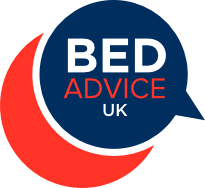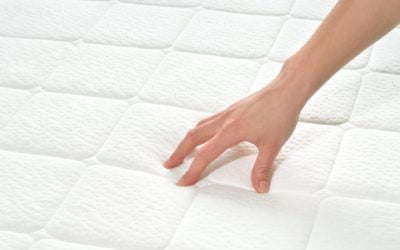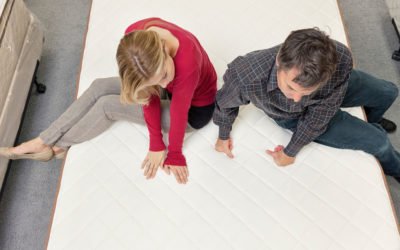Did you know that allergies affect over 21 million adults in the UK and 59% of indoor allergy sufferers say their symptoms feel worse in the bedroom?* Allergies can make sleeping an uncomfortable experience, so you need to make your bedroom as allergy-friendly as possible.
What does hypoallergenic mean?
Hypoallergenic, meaning “below normal” or “slightly” allergenic, was a term first used in a cosmetics campaign in 1953. Today, it is used to describe items (especially cosmetics and textile products) that cause or are claimed to cause fewer allergic reactions.
For a mattress, hypoallergenic means it is allegedly safe for people suffering from allergies, though it’s not a guarantee. The mattresses will reduce allergies by preventing dust mites from penetrating the surface and bedding in. You may find the words anti-allergy mattress, allergy free, etc used to describe a hypoallergenic mattress – they all aim to do the same thing!
What are house dust mites?
The dreaded house dust mite is one of the most common triggers for an allergic reaction. But it’s actually their microscopic droppings that cause the allergies and the hub of these dust mites is your bed – one of their favourite places to live.
A typical used mattress has anywhere from 100,000 to 10 million mites inside. The average person sheds a pound of skin (454 grams) a year, much of it into our beds! Plus, the average adult loses around half a pint (285 ml) of moisture while sleeping each night. So, it’s easy to understand why the bed is a favourite haunt of the dust mite. All that moisture, warmth and food make mattresses, especially old ones, a great breeding ground.
How can the bedroom be improved to alleviate allergy or asthma symptoms?
If you’re one of the unfortunate ones who suffers from watery eyes, a runny or itchy nose, sneezing and wheezing after a night in bed, what can you do to improve things?
It’s especially important to think about changing your old bed or mattress if it is seven years old or more. A mattress that looks OK may no longer be offering the levels of comfort or support that it should. Regular mattress replacement is vital to reduce the prevalence of house dust mites linked with many allergic health problems.
For mattresses that are still reasonably new and performing well, there are several things you can do to help. Air the bed each morning and regularly clean mattresses, pillows and blankets to help eliminate the conditions under which house dust mites thrive.
It is also vitally important to ensure the bedroom is well ventilated. In an age of central heating and double glazing, they rarely are, but a good cool breeze through the room at night will help combat the problem and aid more restful sleep.
For those worried that open windows will allow in airborne pollen, it’s worth bearing in mind that the allergy created by the house dust mite is far worse than any allergy created by pollen. Asthma kills people, hayfever doesn’t, so ventilation is very, very important.
What type of mattress is best for people with allergies or asthma?
If you’re looking to buy a new mattress, then you could consider the different foam options available. Foam mattresses tend to harbour fewer house dust mites than conventional spring mattresses with their layers of fillings including flock pads, horsehair, wool etc.
Latex foam is derived from the sap of the rubber tree and is known for its anti-microbial, anti-fungal and hypoallergenic properties. It has an open cell structure that allows the foam to breathe, dissipating moisture and keeping the mattress interior fresh. Memory foam, gel foam and polyurethane, whilst not having anti-microbial properties, are all good options as their cell structure is not ideal for house dust mites to thrive.
You should also consider buying a mattress with a covering material that has anti-bacterial treatment. Or, use a mattress protector as an additional barrier against allergens. A good one will prevent dust mites from penetrating your mattress, protect your mattress from dirt, dust, stains and spills and help your mattress stay fresher for longer.
Don’t forget the pillow
The same is true of pillows. Some people may be allergic to feather or down fillings. Plus, the proximity of the pillow to the nose and mouth makes it even more important to choose one that is hypoallergenic. Again, look out for special covers or fabric treatments that inhibit house dust mite populations.
More tips for managing allergies in the bedroom:
- Keep temperatures down and flowers OUT of bedrooms (they increase humidity levels).
- Leave bedclothes turned back during the day (this reduces humidity levels in the bed, inhibiting mite survival).
- Avoid drying clothes on radiators in the bedroom. Again, this stops humidity levels from becoming too high.
- Give your mattress a good spring clean. Take it outside for a good airing. If you can’t do that, lean it up near your open bedroom window. Clean the base with a soft brush to remove fluff and dust. If you have to use a vacuum cleaner, do so very carefully and with the window wide open.
- While the bed is moved away from any walls, vacuum thoroughly under and around the bed. It can yield huge amounts of dust and fluff.
- Wash bedclothes and pillows regularly at a high temperature. This kills mites and removes mite faeces; all pillows should be washable these days.
- If hot washing is not possible, 24 hours in the freezer will kill any mites in a pillow before cold washing.
- Fit roller blinds that can be easily wiped clean.
- Clean cushions, soft toys, curtains and upholstered furniture regularly.
- Use a vacuum cleaner fitted with a HEPA filter.
- Wipe surfaces with a damp, clean cloth, as dry dusting can spread the allergens further.
- Use bedding that protects against dust mites.
*Sources: Allergy UK. The WELL Programme.






0 Comments